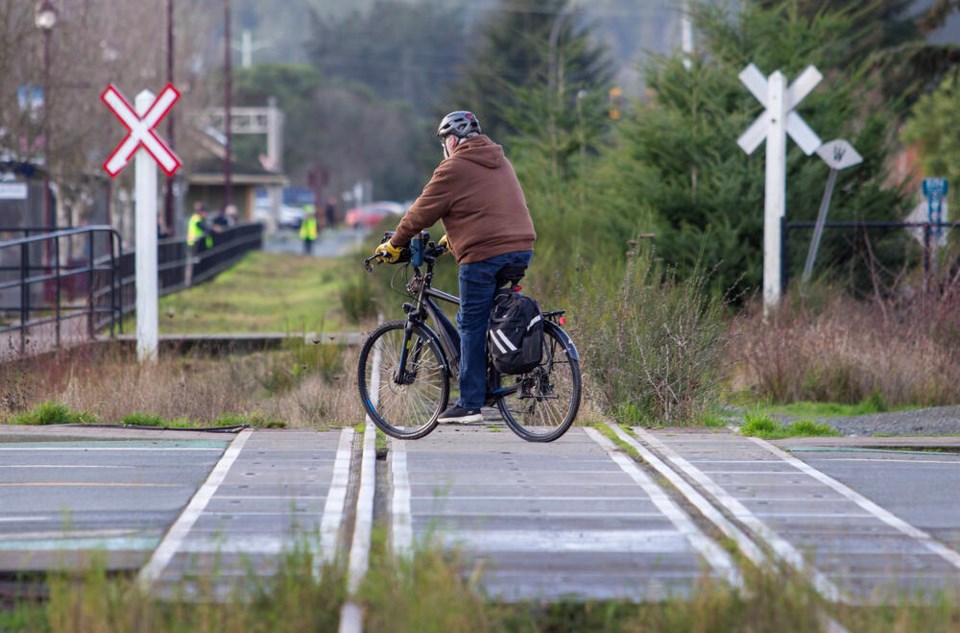If our region does not figure out — quickly — how to move tens of thousands of people daily, we will slowly strangle growth opportunities for business and tourism.

A commentary by a master of engineering who lives in James Bay.
Imagine a thriving metropolitan area nestled around a scenic west-coast ocean harbour, its temperate climate perturbed only occasionally by snowfalls and heat waves.
Its economy is connected to the sea, with a large naval base, shipbuilding and repair activities, and a cruise ship terminal very near downtown. Its modern economy is based heavily on advanced technology and tourism.
On the outskirts of town is a major marine research facility and a reputable university with over 20,000 registrants. The nearby international airport serves one million passengers each year.
Although it is the largest metropolitan area in the region, it lives in the shadow of a major international city about four hours away by ground transportation.
It sounds much like Greater Victoria, and well could it be. However, the region contemplated here is the city of Brest, France.
I visited Brest this month as part of a federal marine technology trade mission. My visit was disappointingly short, but long enough to observe the similarities and stark differences between these two waterfront communities.
The city of Victoria is building housing at a furious pace. It is reducing and often eliminating requirements for parking at new building sites, believing that people will adopt active transportation options, primarily walking and biking.
Yet bike lanes have led to permanent road closures and increased congestion in many intersections and streets, polarizing and sometimes paralyzing the community, often impeding movements of public transit buses, the closest thing Victoria has to mass transit. Few people ride bikes to the airport, after all.
The main streets of Brest, too, are being ripped up in an effort to reduce dependencies on private cars.
In contrast, however, Brest is busy installing Phase 2 of its electric train system. Phase 1, built in 2010-12, stretches 15 kilometres with 28 stops serving two branches and 50,000 passenger trips daily. Dual tracks run right through the downtown core, linking the suburbs to the west and the northeast. They cross the Penfeld River on the Pont de Recouverance, a vertical-lift bridge of 88-metre span (almost double the span of the Johnson Street Bridge), which allows masts over 60 metres tall to pass underneath.
Construction of Phase 2 — a dual-track north-south line into downtown Brest — is well underway, and routing of Phase 3 serving the northwest is already decided. These two lines will terminate at the TGV station downtown, connecting residents to high-speed rail services to Paris and all of Europe beyond.
Greater Victoria has twice the population of Brest, higher density, and a much faster growth rate. Our airport serves more than twice as many passengers as Brest’s does, and — unlike Brest — we have a ferry terminal that transports more than 3.75 million passengers annually.
Our plan for growth, it seems, is to add more bike lanes, build more highway infrastructure like the McKenzie interchange and the Keating flyover, widen the Malahat over sensitive ecological areas, then hire U.S. firms to manage our packed airport parking lots and Chinese shipyards to build our ferries.
Brest retrofitted its moveable bridge to accommodate bi-directional tram lines, and connected its suburbs to its downtown core and mass-transit hubs.
Victoria eliminated rail from its bridge plans, and gave up its rail rights-of-way on both sides of the harbour as the first of numerous Johnson Street Bridge casualties.
Victoria thus ensured the Island Rail Corridor — the region’s most precious yet ignored economic asset — will not serve downtown anytime soon. It won’t terminate at the Rail Yards in Vic West either: last year Victoria Council agreed (again) to convert the long-idle Roundhouse into a market development to serve thousands of people who do not yet live here in highrises that are not yet built.
How will all those future residents go to the airport, to ferries, or to the university?
If our region does not figure out — quickly — how to move tens of thousands of people daily between YYJ, Swartz Bay, downtown, UVic, the Western Communities, and points further north, we will slowly strangle growth opportunities for business and tourism, choking off economic potential and livability for generations to come.
The best time to plan for mass transit was a few decades ago. The next best time is right now.
This month, century-old tram lines were uncovered along Menzies Street by workers upgrading underground utilities. Victoria once moved people on rails.
It was a good idea then, and a vital one today.
>>> To comment on this article, write a letter to the editor:[email protected]